While visiting China over the summer, I happened to visit some clothing stores and reached an epiphany. In much of the West, we buy clothing from business empires such as Balenciaga and Nike. So, it was naturally shocking when I stumbled across the words “Balengiaca” and “Nkie” written on shoes in the store. There seemed to have been some blatant plagiarism, but disguised in ways I couldn’t help but take note of. I found this so fascinating that during one stop, I dug deeper into this phenomenon and fell into a massive rabbit hole.
The store sold primarily shoes, both for sport and for fashion. The shop was not large, with two aisles of display separated by about 3-meters of free space and a back area where inventory was kept. You could find these stores pretty much everywhere in small streets all over China. Luckily, a large samoyed and English shorthair were kept in the shoe store (safety restrictions are pretty much non-existent in most areas), so I was kept thoroughly entertained during my mission.
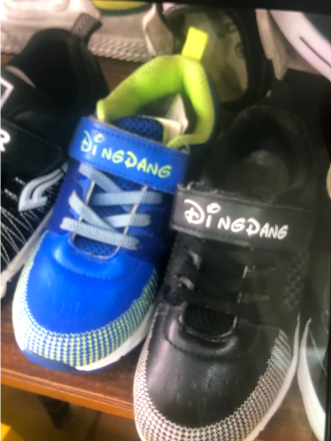 I started by taking photos of the most ridiculous names I could find. Ding-Dang in the font of Disney, incoherent names that resemble keyboard smashing, the whole inventory was right in front of my eyes. Most noticeably, however, were the knockoffs. How was it possible that these shoe companies received sanctions to take logos from existing ones and just plop it on as if it were their own? There had to have been a myriad of patents and intellectual property laws that disallowed this. What are they doing to get out of these legal distinctions?
I started by taking photos of the most ridiculous names I could find. Ding-Dang in the font of Disney, incoherent names that resemble keyboard smashing, the whole inventory was right in front of my eyes. Most noticeably, however, were the knockoffs. How was it possible that these shoe companies received sanctions to take logos from existing ones and just plop it on as if it were their own? There had to have been a myriad of patents and intellectual property laws that disallowed this. What are they doing to get out of these legal distinctions?
As it turns out, this popular practice of selling knockoff clothing in rural areas can be traced via historical reasoning. We will use China as an example. It all started in 2000 BCE during China’s lengthy dynastic ruling. Generally, it is safe to say private property has rarely been enforced under legal jurisdiction. This allowed emperors from every dynastic cycle to take control of land, regardless if it was rightfully owned by them or not. Taxes on farmers, regardless of work efficiency, would have had to be paid if they were using land issued to them by the government. This has influenced modern-day China in a way, as major companies still operate primarily under governmental guidance & ownership. So how does this connect to intellectual property? Well, all ideas of private property, including intellectual property, have been considered newer ideas to the PRC. Private property ownership had only recently been amended in the 4th revision of the national Constitution in 2004. Recent statistics show that only roughly 40% of the country’s GDP is attributed to private consumption. Intellectual property had been addressed earlier, though, when China agreed to participate in both the Paris Convention for the Protection of Intellectual Property and the Madrid Agreement for the International Registration of Trademarks in 1985 and 1989, respectively. In theory, this would mean a significant decrease in copyright & trademark infringement for Chinese companies, right?
In practice, as it turns out, this was not the case. Not only was the implementation of this rule done so very loosely, companies either flat out disregarded it completely or found clever loopholes around it. Additionally, whether or not the penalty applied for breaking the trademark law was solely found in the offender’s motivation for profit. This made it very simple to defend your case, and either stagnate or escape the court entirely. On a cultural front, these laws and attempts to control trademarks were even more fruitless. The country had not believed that copying of ideas was inherently wrong, sometimes even praising it for being a method for improvement. This widespread cultural belief made intellectual property an even harder dragon to slay. This results in the widespread knockoffs we associate with China and many other rural countries of today. To put it simply, a lack of intellectual property laws in the country mixed with a cultural hindrance results in, well, this:
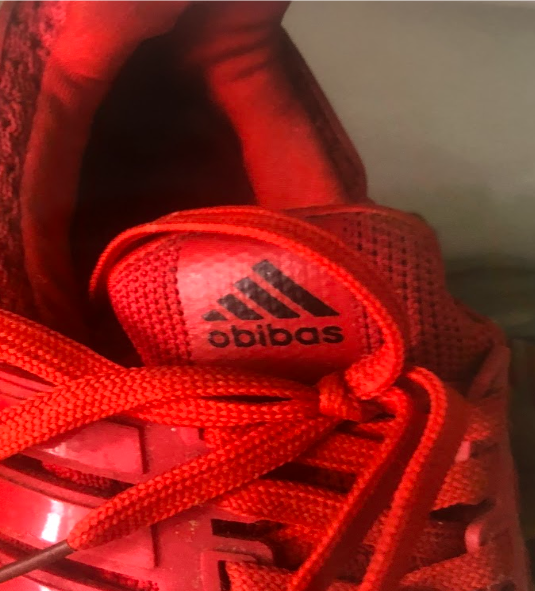
To make light of these findings, I will now list the top 3 pairs of shoes I found during my time in China, and a brief description of my reasoning behind my choices below:
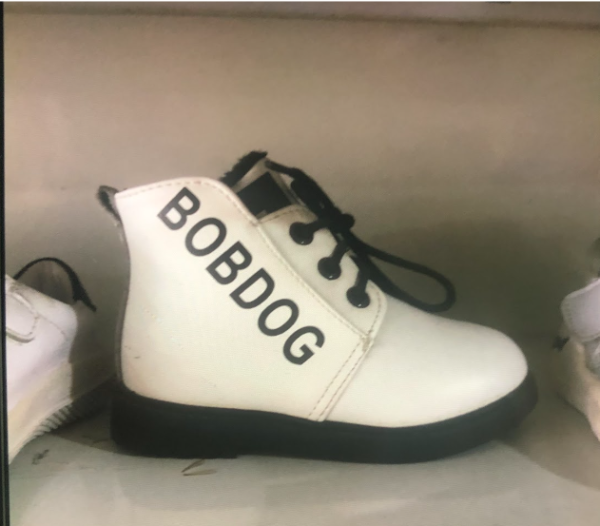
In third place, we have these white boots. I selected this pair solely for its design. Although it was attempting to copy the originally Japanese brand BOBDOG, the intrusive text in all-caps with its sans-serif typeface brings immediate questioning to the graphic design team and not the company. Interestingly enough, this pair of shoes would not be under immediate penalty for copyright & trademark infringement as the parent company has only patented its clothing items under the exact words, “LITTLE BOBDOG.” Since the word “LITTLE” was not on the boots, they will survive and gain a worthy spot on the market free of legal charges.
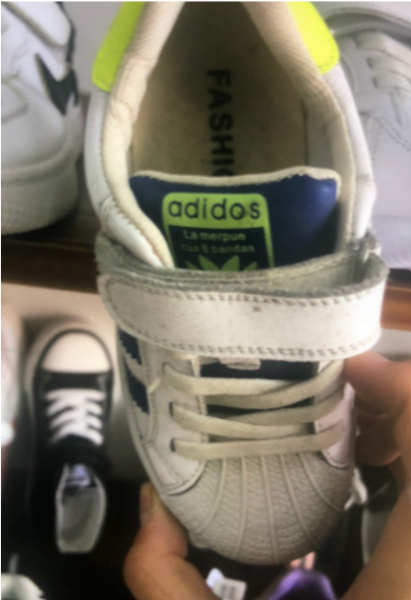
In second place, I chose these children’s shoes that resemble a certain brand I think we’re all familiar with here in the States. Adidas is a powerhouse in the footwear industry, and these shoes seemed to have blatantly ripped it off, slapping an “o”in place of the second “a”. Additionally, they have also managed to attach the three stripes that are characteristic of Adidas on the sides of the shoe, although it lacks clarity in the photo. These shoes, once again, are not technically in violation of Adidas’s trademark. The letter swap is minor but does manage to get the product out of the danger zone, and in rural countries where its intended audience is not primarily literate in English, I think this is a pretty clever idea. In regards to this, I also want to note that many foreign stores from what I’ve seen in China are misspelled, usually only in one or two places. An example of this is the Calvin Klein’s store near my grandparents’ home, spelt “Calin Kevins.” Although this is probably accidental, I find humor in it.
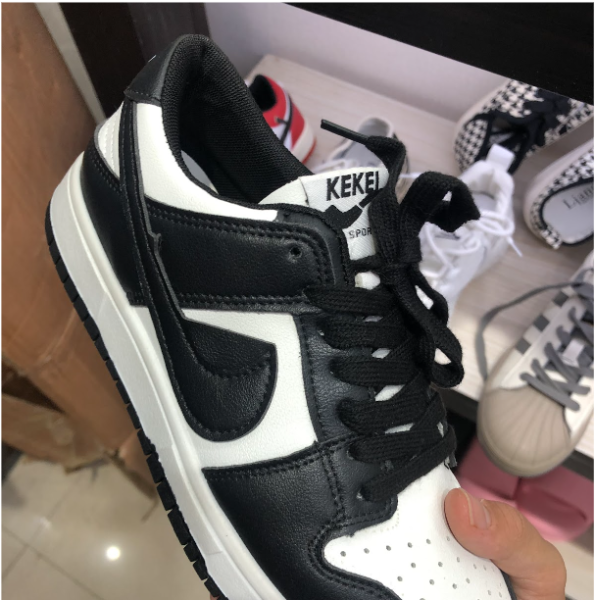
Finally, in first place, we have this pair of black-and-white shoes. At first, you might be wondering what the catch is. The brand, Kekei, does not seem to be stealing from any major name brand, and the shoe design itself seems pretty straightforward. However, looking at the dash on the side, you can notice that it bears striking resemblance to the Nike logo, only with a little semi-circle flap placed at the curve. In a surprising twist, this flap is removable by the consumer at home, making the shoe look like Nike’s without leaving a trace! This is a genius solution to the problem of trademark infringement. Nike’s beloved “swoosh” logo is everywhere, and there are of course trademarks associated with it. Therefore, by creating a removable flap on it, the logo is hidden and unable to be detected at first glance. It is only when the consumer decides to remove it that it becomes an issue, but Kekei’s has obviously gotten around this as the shoes are one of the most popular ones in the store.
There are many small businesses in the world that sell off-brand items like this one. Sometimes, they’re $5 “Louis Vuitton” bags sold en masse at a holiday sale. Other times, they’re “Prada” sunglasses sold by a lady’s lone shop in the back of a Shanghai alleyway. Regardless, I think it’s interesting to note the legality of it all, and how it may seem like the polar opposite of what we do here in the States. My personal opinion is that these copied products are harmless and can bring great humor to some extent, and as long as these knockoff items are around, we can laugh at their stupidity without getting sued by Nike.
